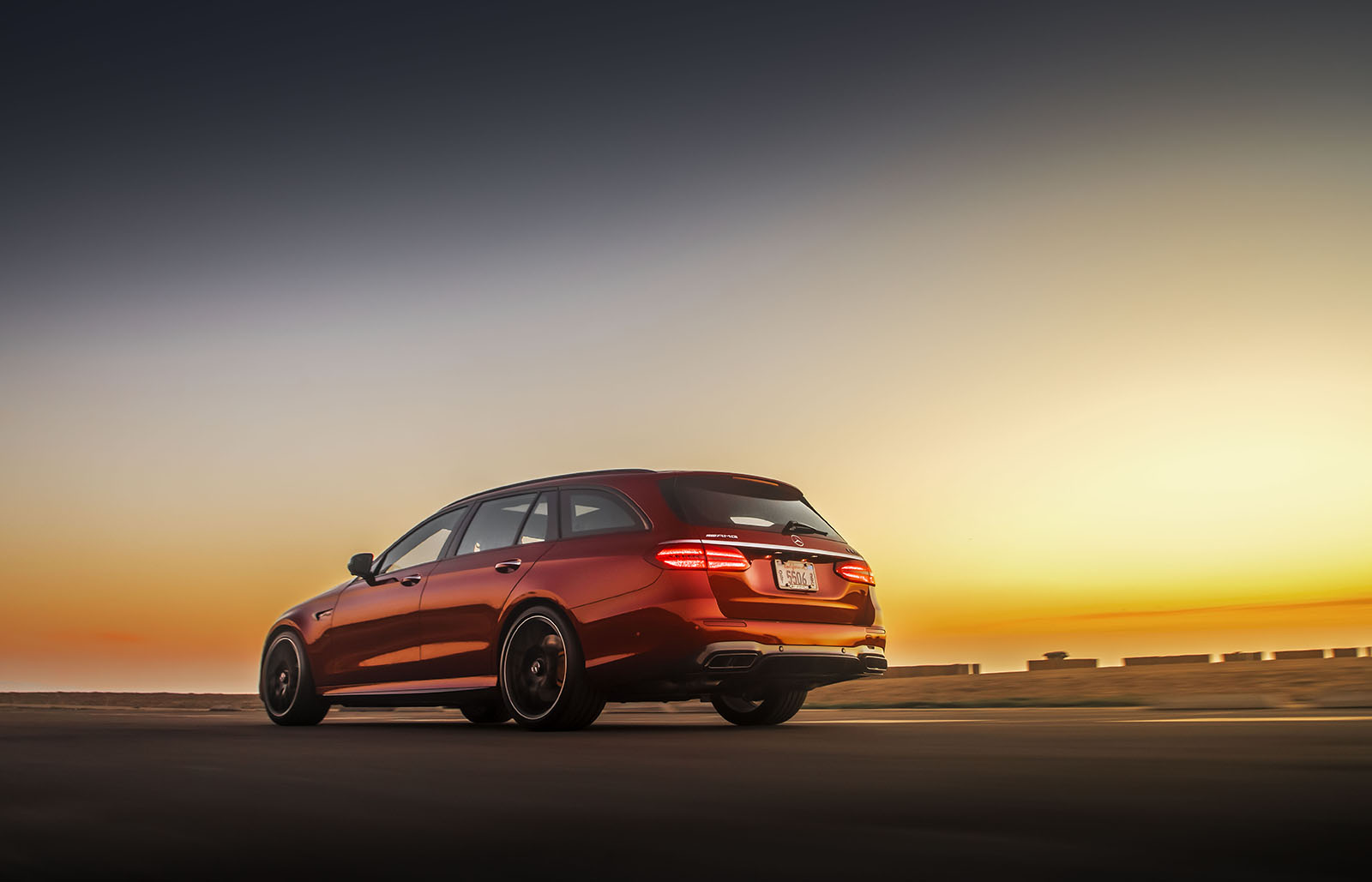
That may sound like a lot of dough for getting the kids to school. But this isn’t just any normal E-Class wagon. It’s hands down one of the fastest ways to get your youngsters and their things to the next destination, thanks to the same drive- and powertrain as the Mercedes-AMG E63 S sedan. That of course means an incredible AMG-tuned 4.0-liter biturbo V8, offering up a total output of 603 horsepower and 627 pound-feet of twist. With a standard nine-speed AMG SPEEDSHIFT MCT automatic, the E63 S can go from a standstill to 60 mph in just 3.4 seconds. Should you find yourself at a racetrack with a long enough stretch of road, the 2018 Mercedes-AMG E63 S wagon can top out at over 180 mph.
So there’s absolutely no reason for anyone to be late to soccer practice.
Just to put that into perspective, the previous E63 S wagon was already quite fast as is. Based on the W212 E-Class of last generation, the last E-Class AMG wagon left off using a 5.5-liter biturbo V8 with 518 hp and 516 lb-ft of torque, replacing the original car’s naturally aspirated 6.2-liter V8. When equipped with the optional AMG Performance Package, the previous E63 wagon produced 550 hp and 590 lb-ft of twist. Only 209 previous-generation E-Class AMG wagons sold here in the states between 2012 and 2013.
Keeping things level in the turns and making the ride firm yet compliant is AMG’s latest multi-chamber air suspension with continuously active and variable damping, that maintains body control without terribly sacrificing ride quality. Helping to manage that blistering speed are massive ventilated and perforated 15.4-inch brake rotors with six-piston calipers at the front, and 14.2-inch discs and single-piston calipers at the back. Should you really need some serious stopping power, AMG’s Carbon Ceramic Composite Braking System is optional – but you’ll most likely have to consider selling off one of your kids to afford those.
With over 35 cubic feet of trunk capacity behind the second row of seating, which can also split 40:20:40 for even more room, the latest E63 S wagon – based off of the latest W213 E-Class, sports plenty of space for five people plus all of their things. And being a Mercedes-AMG car, it will be way nicer on the inside than your neighbor’s Lexus, thanks to the same dual 12.3-inch digital screen cluster and display setup as the standard E-Class and larger, more expensive S-Class, for both the gauges and the center console.
“We’re proud of our American tradition of selling both the E-Class Wagon and its AMG high-performance variant,” said Bernie Glaser, general manager of product management at Mercedes-Benz USA. “Our ability to offer an AMG E-Class Wagon with standard 4MATIC all-wheel drive since 2014 has greatly enhanced our unique position, both in terms of performance capability and also for winter weather conditions in northern markets.”

It might seem like wagons are on their way out of relevance with the popularity of crossovers taking over as the ideal mode of transport for the daily trips to sports practice and Costco, even nudging aside popular sedans. But Mercedes-AMG proves that wagons, albeit fast and sporty ones, are here to stay.




